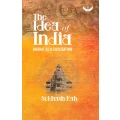Shop by Category

Society in Ancient India: Evolution since the Vedic Times based on Sanskrit, Pali, Prakrit and Other Classical Sources
Sold By:
DK Printworld
₹650.00
Short Description
The book unveils the ancient Indian society in all its variegated evolutionary expressions across 2500 years to explore the sociological orientations of the Vedic Samhitas, Brahmanas, Upanisads and other Sanskrit works besides Buddhist and Jaina works.More Information
| ISBN 13 | 9788124600795 |
| Book Language | English |
| Binding | Hardcover |
| Total Pages | 423 |
| Edition | 3rd |
| Release Year | 2007 |
| Publisher | D.K. Printworld Pvt. Ltd. |
| Author | Sures Chandra Banerji |
| GAIN | UKPPLKW07FR |
| Category | History & Archaeology Sociology Ever Green Shelf Life |
| Weight | 650.00 g |
| Dimension | 14.00 x 22.00 x 1.80 |
Frequently Bought Together

This Item: Society in Ancient India: Evolution since the Vedi...
₹650.00
Sold by: DK Printworld
Choose items to buy together
ADD TO CART



This Item: Society in Ancient India: Evolution since the Vedic Times based on Sanskrit, Pali, Prakrit and Other Classical Sources
Sold By: DK Printworld
₹650.00
Total Price : ₹650.00
Product Details
It is a fascinating, meticulously documented study unveiling, for the first time, the ancient Indian society in all its variegated evolutionary expressions across about two-and-a-half millennia: since the Vedic times (c. 1500 BC) — with a beautifully well-knit account of its religions and cultic practices; economic paradigms; polity and statecraft; educational set-up; customes, manners, etiquettes; food habits, drinks, dress styles; sports, pastimes, modes of recreations; sex life and sexual morality; casteist hierarchies; attitude towards women; and its crimes, punishments and legal codes. Epitomising a lifetime of Dr. Banerji’s research on ancient India, the book vividly captures all different articulations of sociological import from a whole body of traditional writings: both sacred and secular. Again, it turns out to be the first ever study to singly explore the sociological orientations of the Vedic Samhitas, Brahmanas, Upanishads, Kalpasutras, Vyakaranas, Puranas, Smritishastras, Tantric texts, the Ramayana, the Mahabharata, Kautilya’s Arthashastra, and many other Sanskrit classics — besides Buddhist and Jaina works in Pali, Prakrit and Apabhramsha languages. With highly informative appendices, extensive bibliographic references and a glossary of technical/unfamiliar words, the book holds out enduring appeal to both scholars and discerning readers.






















